Get PeakVisor App
Sign In
Search by GPS coordinates
- Latitude
- ° ' ''
- Longitude
- ° ' ''
- Units of Length

Yes
Cancel
Share ×

Scan the QR code and open PeakVisor on your phone
❤ Wishlist ×
Choose
Delete
On the southeastern border of Europe, Bulgaria is gaining a reputation as an exciting tourist destination. The most prominent national park in the country is National Park Rila, home to a number of wonders covering everything from steep green peaks to deep blue lakes. There are 123 named mountains in National park Rila. The highest and the most prominent mountain is Musala (2,926 m/ 9,599 ft).
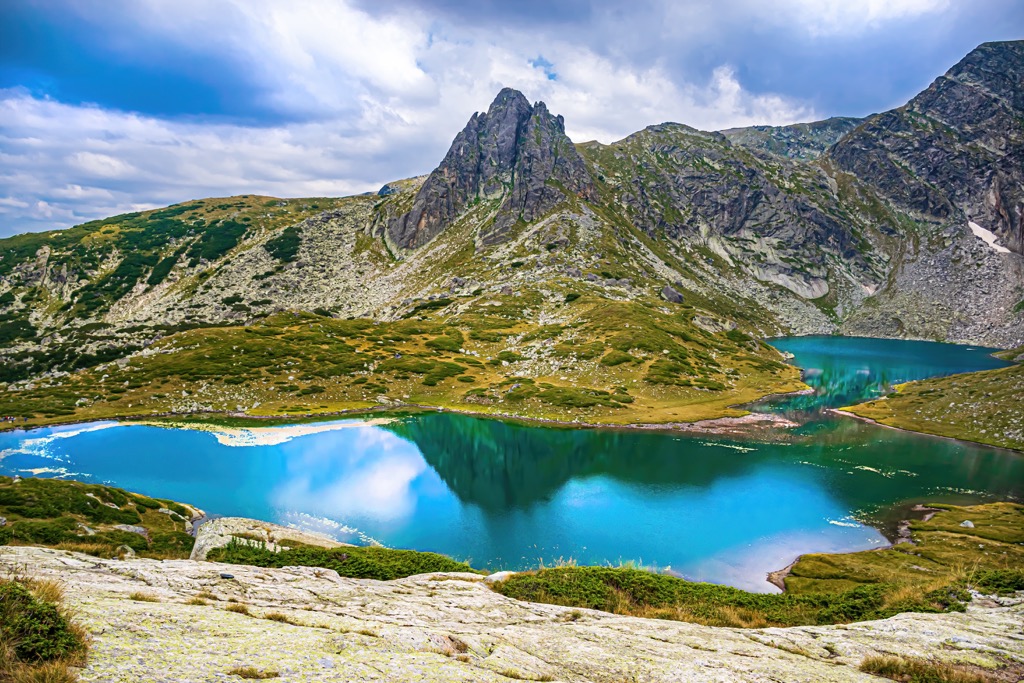
Rila National Park is located in Bulgaria's southwest region and is 810.46 sq. km (312.94 sq. mi) large. Don’t confuse it with Rila Monastery Nature Park, which is a neighboring park taking care of Rila Monastery.
Its altitude varies from 800 m (2,624 ft) near Blagoevgrad to 2,925 m (9,596 ft) at Musala, the highest summit in the Balkan Peninsula. The national park lies in 4 provinces of the country: Pazardzhik, Sofia, Kyustendil, and Blagoevgrad. The nearest town is Borovets.
Due to the deep incisions of the valleys of the rivers Beli and Levi Iskar, Rilska, Ilina, Blagovehgradska Bistritsa, and Belishka divide Rila into four separate parts: Eastern, Central, Northwestern, and Southwestern.
There are four sections of the Rila National Park. Eastern Rila takes up almost half of the territory. Northwestern Rila and Southwestern Rila are nearly the same sizes. The size of Central Rila is smaller because it lies partially in Rila Monastery Nature Park.
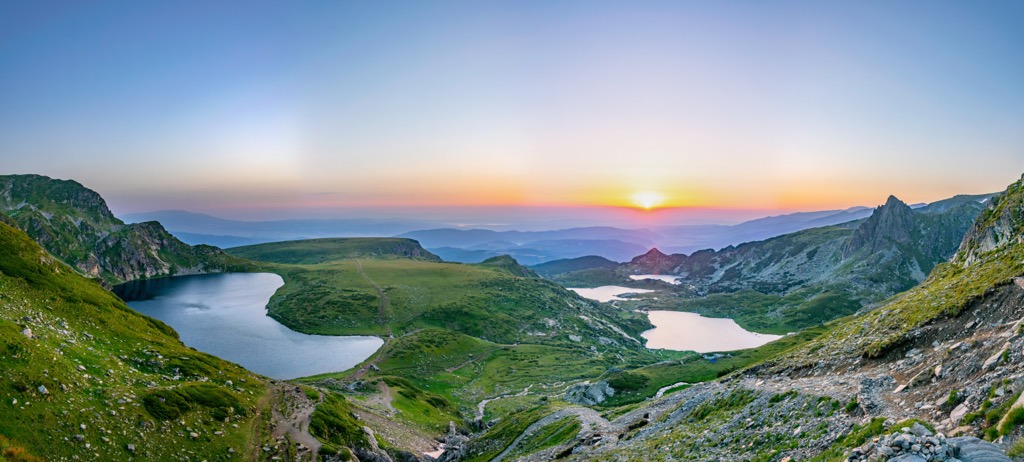
You will find more than 120 permanent and 30 temporary glacial lakes in the higher parts of Rila. A few of them lie inside some of the highest and deepest valleys on the Balkan Peninsula, just like the Seven Rila Lakes.
In those areas, you can find numerous springs feeding the most potent rivers on this peninsula: Iskar, Maritsa, and Mesta. Many municipalities rely on Rila National Park for their freshwater supplies. The nearby capital of Sofia and people from Greece and Turkey also depend on these supplies.
Two natural reserves are on the UN list of Representative Protected Areas. The World Network of Biosphere Reserves under the UNESCO Man and Biosphere Programme inside this park includes four nature reserves. These reserves were declared between 1933 and 1992. The four Rila National Park reserves include Central Rila Reserve, Ibar Reserve, Parangalitsa Reserve, and Skakavitsa Reserve.
Ibar is a protected reserve that preserves ancient forests as well as rare plant species inside Rila National Park. It covers an area of 2,248 ha (5,554 ar) and finds its northern slopes below the peak of Ibar (2,668 m/8,753 ft).
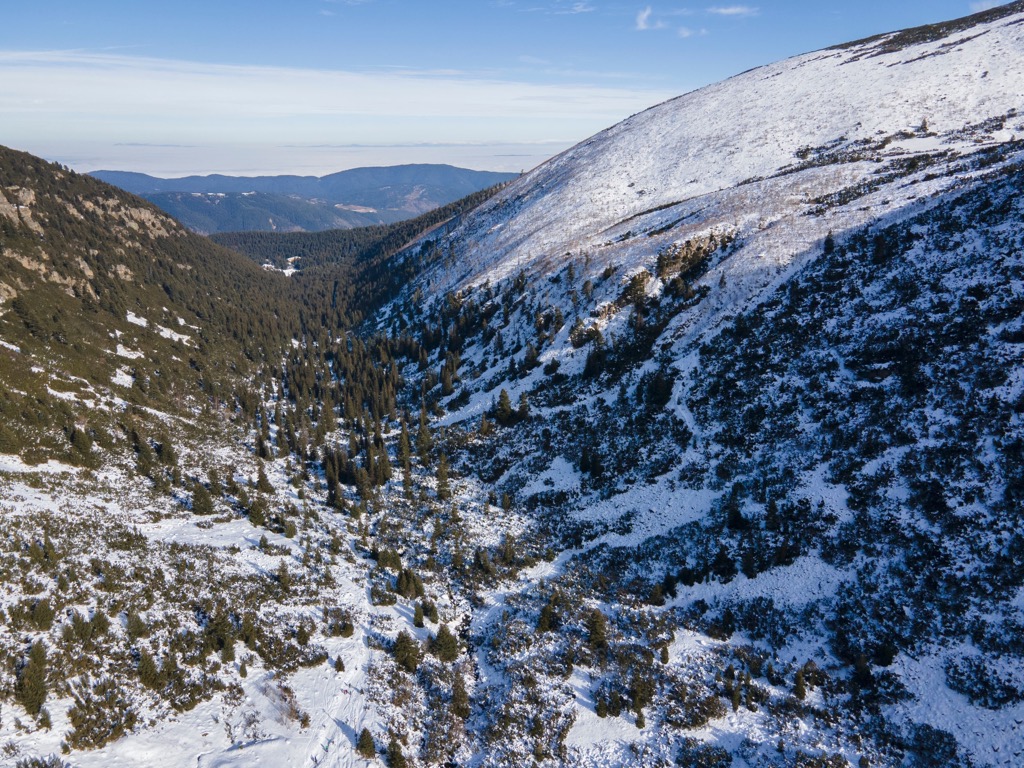
Parangalitsa is the oldest forest reserve that has been around since 1933. It's located near the southwestern slopes of Rila ridge, covering 1,509 ha (3,728 ar). The forests there are home to old pine trees with an average age of over 200 years. In 1977 became part of the program “Man and Biosphere” of UNESCO.
The Central Reserve in Rila is the biggest one in Bulgaria and one of the biggest reserves in Europe. It was founded to preserve the forest, sub-alpine, and alpine ecosystems below and on Musala (2,926 m/ 9,599 ft). The area of its reserve is 5,015 ha (12,393 ar) and stretches over a large territory around the peak of Musala.
Skakavitsa is the smallest of the Rila reserves. It is a typical forest reserve where you can find ancient white fir forests. The reserve cares for 80% of the park’s white fir trees. It has an area of 70 ha (172 ar).
There are more than 123 peaks in the territory of the park, and 100 of those with an elevation that exceeds 2,000 m (6,561 ft). The highest one among them is Rila’s highest peak Musala (2,926 m/ 9,599 ft). It is also the highest peak of the Balkan Peninsula. Due to the height, the temperature here stays below zero °С (32°F) for nine months during the year. During the summer months, temperatures rarely rise above 15°С (59°F).
Some parts of Rila are still remote and off-the-radar, attracting a limited number of visitors. The most popular parts of the park, on the other hand, are beautiful and flooded with tourists. The Intensive Tourism Zone in the park is one of the most popular paths on Rila as it offers a wide range of activities for first-timers who come to play with Bulgarian culture and traditions. There are a lot of things to do as a tourist here.
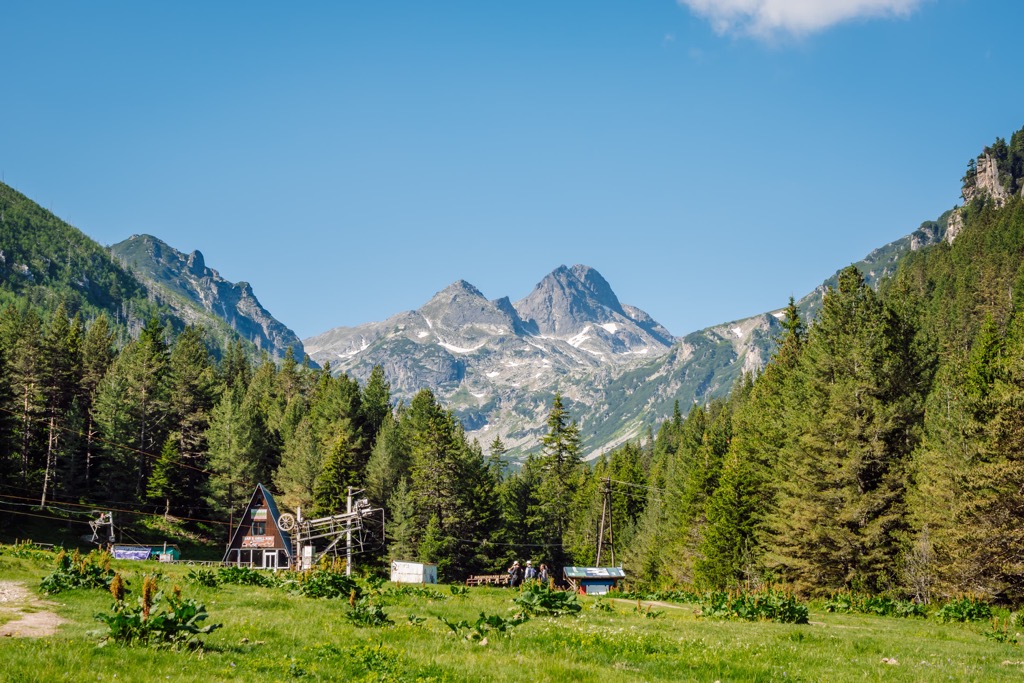
You can go mountain biking, skiing, snowboarding, camping, mountaineering, or even just walking. The botanical trails built for nature lovers might be the thing for you, just like the other specialized routes like Beli Iskar, the Path of the Balkan Chamois, and others. Local tourist facilities are quite plentiful and include 17 mountain huts and 4 mountain shelters.
Rila is a crescent-shaped mountain range in the oldest part of the Balkan Peninsula. It has two fault systems. One is concentric and the other radial. It's part of the Macedonian-Thracian Massif. One distinctive feature of Rila Mountain is its size. It also has a lot of valleys surrounding it, which make its grandiosity stand out.
Within Rila National Park and its periphery, there are three main classes of rocks: metamorphic, magmatic, and sedimentary. Metamorphic rocks consist of either metamorphosed sedimentary deposits or metamorphosed magmatic deposits.
They consist of either shale, gabbro, or granite, and they include numerous variations and subclassifications. These magmatic bodies are huge, such as the Rila-Rhodope batholith. One can often find sedimentary rocks here as well. Water deposits these rocks, and they include various types of sediments.
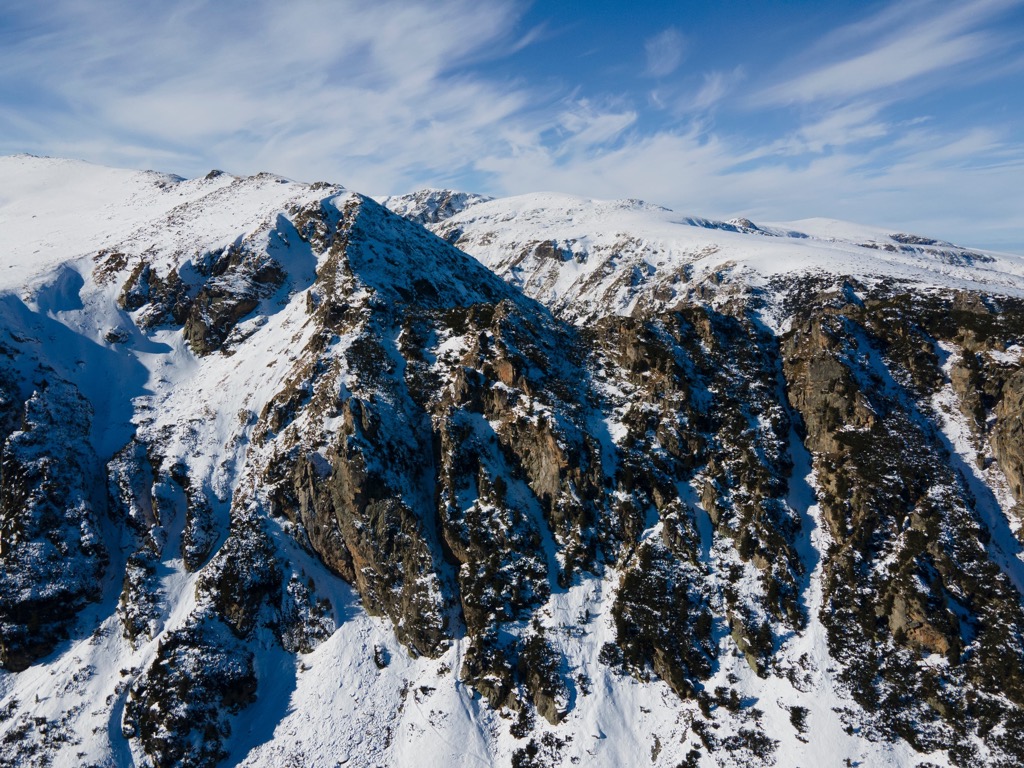
Metamorphic and intrusive rocks make up the bulk of this mountain range. Rila contains granite, and the rest of the layers consist of various rock types. It has a thick layer of crystalline schists and a top layer of sandstones and conglomerates. Tertiary sediments cover it, which became elevated due to erosion.
Marbles, amphibolites, and coarse-grained granites formed on the mountain terrain since the Paleozoic era and were raised during the Tertiary period. The mountains consist of these rocks that cover almost two-thirds of their surface area.
Different types of reliefs exist on the territory of Rila National Park. Some come from large hypsometric ranges and varied landscape conditions, while others come from morphogenic processes. Some of them are formed by processes that have been ongoing for many years and others have been the result of a change in environment.
These processes create the morphology of this mountain. Today, in the territory of Rila Mountain, there are various types of sedimentary rocks, including glacial, periglacial, planar, and gravitational.
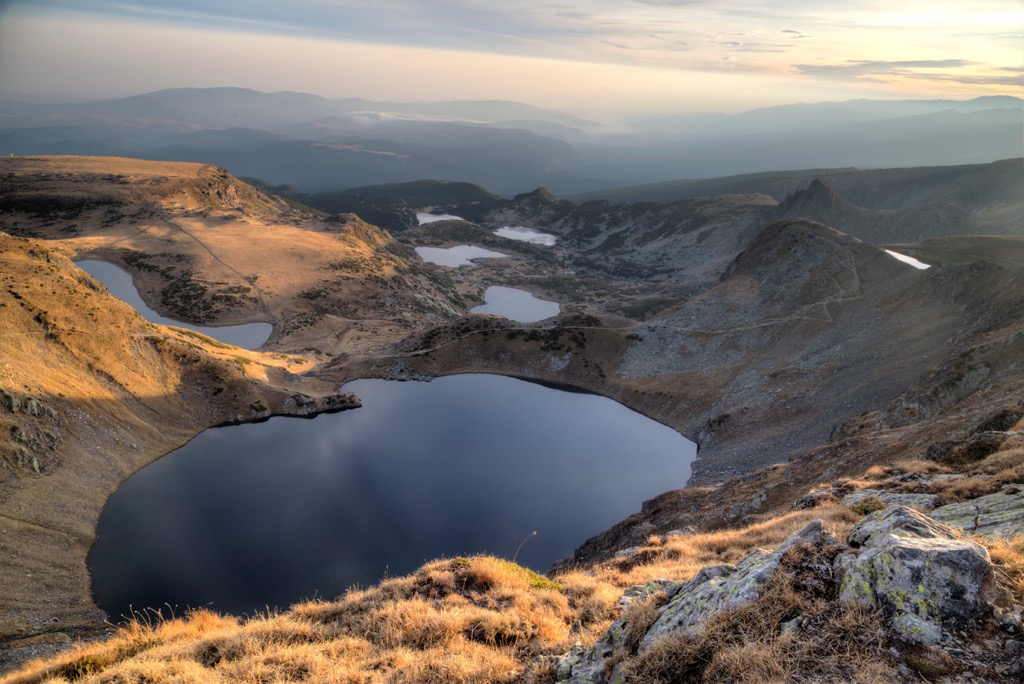
Rila was subjected to glaciation in the Pliocene and Pleistocene, resulting in its modern Alpine relief, formed 10,000 - 12,000 years ago. It saw a huge ice buildup at the elevation of 2,100 m (6,889 ft) that lasted through the last Würm glaciation. The glaciers reached as low as 1,200 m (3,937 ft).
Above this boundary, glaciers formed steep cliffs and long valleys filled with streams and lakes. This is how Rila got its beautiful morphology of deep valleys and steep ridges. The bottoms of circlets often have glacial lakes in them, often seen from the peaks. One example of erosion lies in the southwestern foothills of Rila Mountain, where the Stob Earth Pyramids lie. Here, erosion fell to create a pyramid-shaped rock formation.
Along the ridge of Rila Mountain lies the main watershed separating the Danube (Black Sea) and Aegean watersheds. It is a natural dividing line in Bulgaria, starting just west of the resort town of Borovets, continuing east to the resort city of Bansko, and north to Sofia.
This line runs for about 76 km (47 mi) inside the National Park. Due to this, it can be divided into two parts by the watershed line. The southern part of the National Park flows to the Black Sea, while the northern part of the National Park flows through to the Aegean Sea.
The highest peaks of the park include:
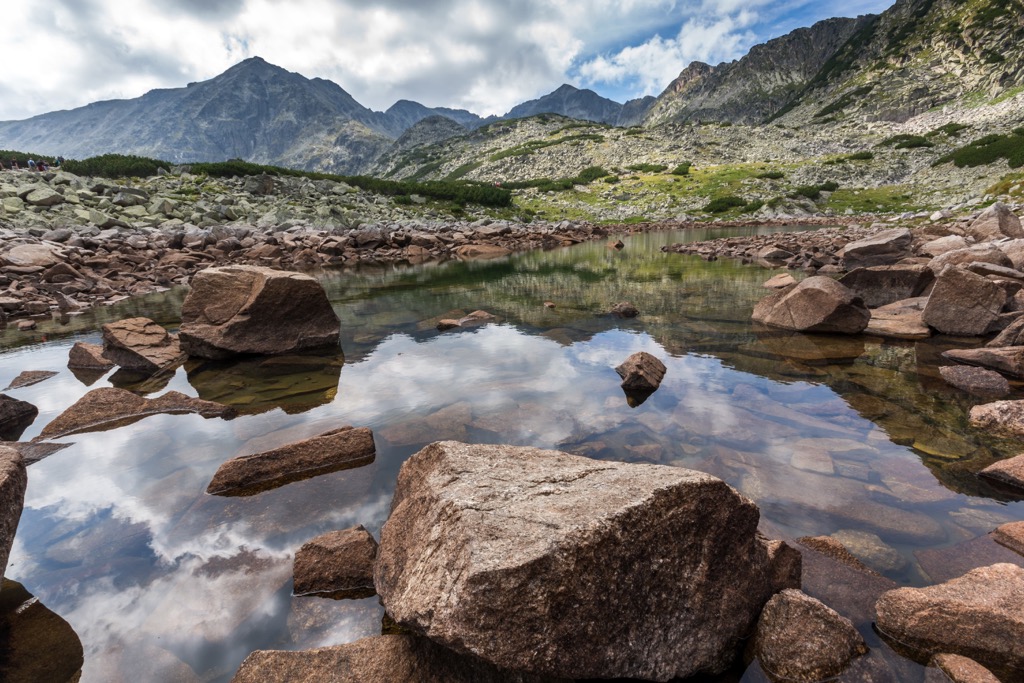
Rila National Park is a UNESCO World Heritage Site, and it is also on the IUCN's List of World Heritage in Danger. It was designated as Category II and currently faces problems like illegal logging, hunting, road building, and expansion of tourism. The UN Protected Areas list includes two of the four reserves of Rila National Park, while the UNESCO Biosphere Reserves include all four parks in total.
Rila falls within the Rhodope montane mixed forests of the Palearctic temperate broadleaf and mixed forest region. Forests occupy around 66% of the total area and are home to many different plants, animals, and other natural elements.
Scientists found 1,400 species of vascular plants, 280 species of mosses, and 130 different types of freshwater algae. Fauna is abundant and well-represented by a variety of species, such as 99 species of birds, 48 species of mammals, 20 species of reptiles, and 5 types of fish. This number adds up to 2,934 species inside the park.
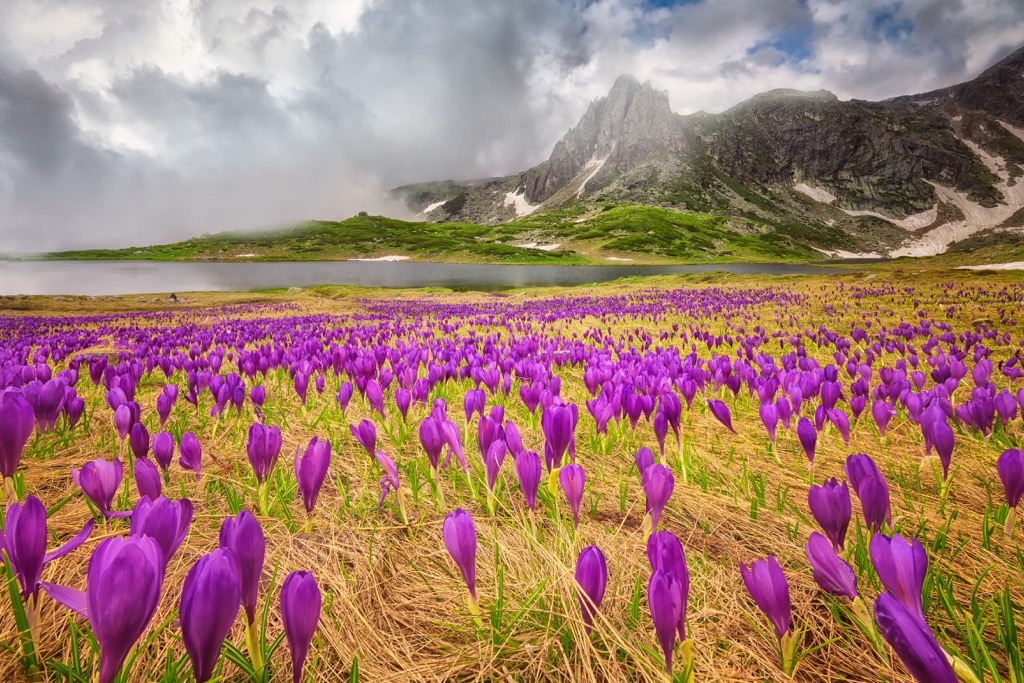
With a trained eye, it is easy to distinguish between the levels of numerous mountain ecosystems within Park. These make up about 15% of all habitats in Bulgaria and they offer a unique glimpse into biology as well as something that the public can learn about.
The territory of Rila National Park is located mainly in the transitional-continental climate zone of the country, occupying an intermediate position between temperate and Mediterranean climate zones. Parts of the park to the south pass from and into the Continental-Mediterranean climate zone. North Rila and Middle or Central Rila correspond to the transitional-continental climate.
The Rhodope Montane Mixed Forests ecoregion comprises the Balkan and the Rhodope Massifs. The latter contains Rhodope, Pirin, and Rila massif, and the Balkan massif is also known as Stara Planina. The majority of the ecosystem lies in Bulgaria. It is on the northwest edge of Serbia, an outlying southwestern area partially in North Macedonia, and the southern edge stretches over the border into Greece. The Rhodopes are composed of crystalline rocks, generally considered to be a kind of sedimentary rock.
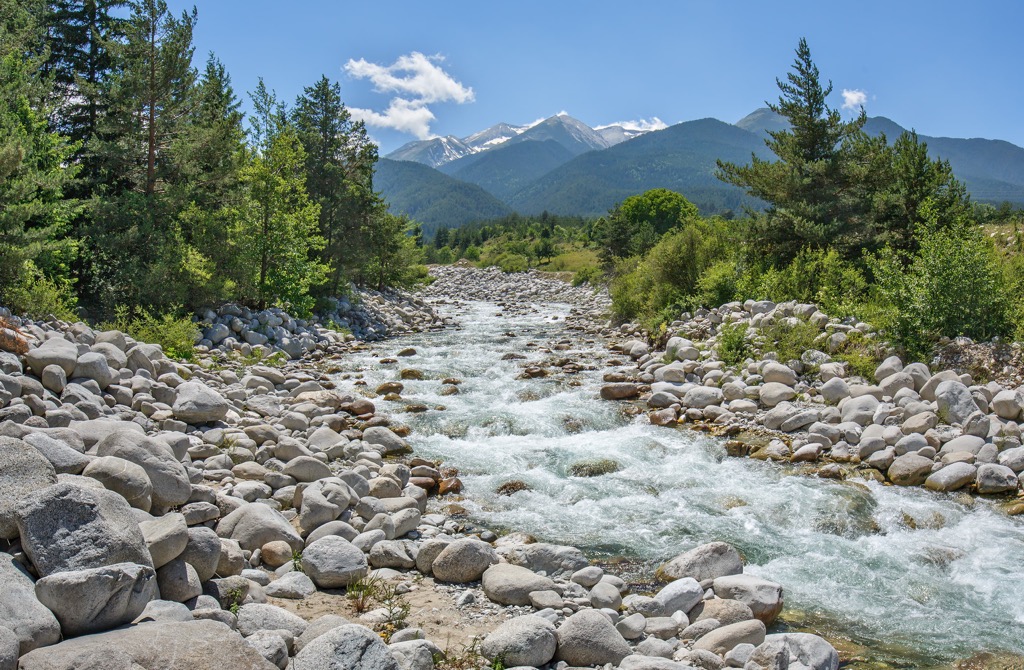
They are known for their karstic hills and are one of the most ecologically diverse regions in the world. It is home to stunning climate variations which result from both altitude and descending from high mountains through deep valleys.
Stara Planina mountain range hosts around 2,000 species, and the Rhodope massif has 1600-1800 species of plants. One of the most notable endemics you'll find here is the spectacular Rodopean lily. It has a long, green stem and bright yellow flowers. Other interesting plants found here include Rhodope toothwort, Verbascum spathulisepalum, and Tulipa rhodopea.
There are many types of forests here as well, and they include mixed broadleaved forests of species such as sessile oak, European beech, and hornbeam. The ecoregion is also remarkable for its biodiversity. Not only does it support brown bears and wolves, but it holds the critically endangered Balkan lynx as well.

It is home to the marbled polecat, golden jackal, wild cat, wild boar, and red deer. The mountains are home to numerous birds, including the endangered saker falcon, imperial eagle, short-toed eagle, Egyptian vulture, griffon vulture, and cinereous vulture.
The largest national park in Bulgaria is surrounded by majestic mountain peaks - the highest being Mount Rila. With such great natural and cultural influence, it is no wonder that the Park is a UNESCO World Heritage site. The name of the mountain Rila most probably comes from the Thracian word roula, meaning ‘lots of water.’
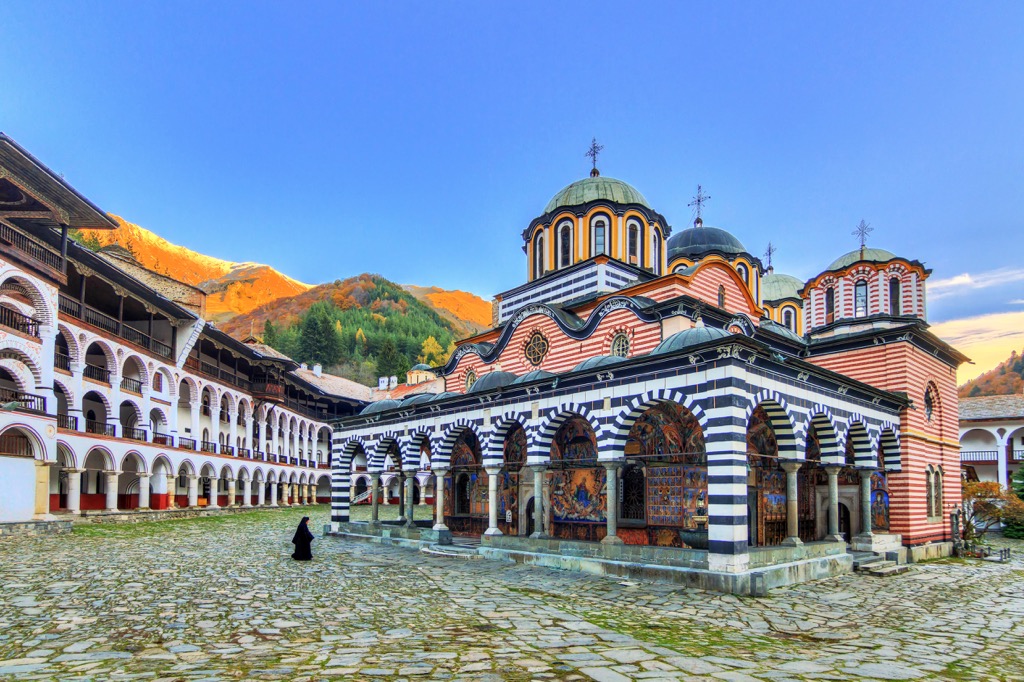
Like any other Balkan mountain range, it was scarcely inhabited in prehistory. In antiquity, the local hot springs were used for roman baths, but few people lived on the mountain. Those who did, lived at lower elevations in winter and in the summer months would travel up the mountain with their livestock.
The medieval period and the Orthodox Church's occurrence changed this. This was the time when local people became saints and built numerous churches for locals to teach them about spirituality. But that is not all that Rila has to offer.
Rila has numerous sites to offer to tourists, like the Stob Earth Pyramids, the Seven Rila Lakes, the museum of history in Samokov, and the summit of Musala (2,926 m/ 9,599 ft). Of course, one can also visit the Rila Monastery, even though it is a separate nature park. Rila Monastery is one of the most important landmarks in the area of Eastern Bulgaria. It is a UNESCO World Heritage Site since 1983 and lies at an altitude of 1,147 m (3,763 ft).
St. John of Rila is considered the first hermit in Bulgaria's history. He was a pious monk traveling from village to village on the Rila range and founding monasteries all around Bulgaria. His students passed on his wisdom and founded the original Rila Monastery in 907.
While living in the Rila mountains, three shepherds came across John and questioned him. Saint John let them eat the peas that he grew. As the group of people left, one shepherd took some peas without St. John's blessing, only to find them missing when he returned. They understood what they did, apologized, and received his forgiveness. Once they apologized, the plants reappeared, and the shepherds ate them.
Rila became a holy site and soon a monastery, known as the Rila Monastery, having a crucial role in the spiritual and social life of medieval Bulgaria. The church complex was destroyed by fire at the beginning of the nineteenth century but soon rebuilt between 1834 and 1862.
Most of what you see today is from 1834. Also, while the monastery does lie on the Rila massif, it is not part of the Rila National Park. Instead, it is part of a secluded smaller protected unit or Rila Monastery Nature Park.
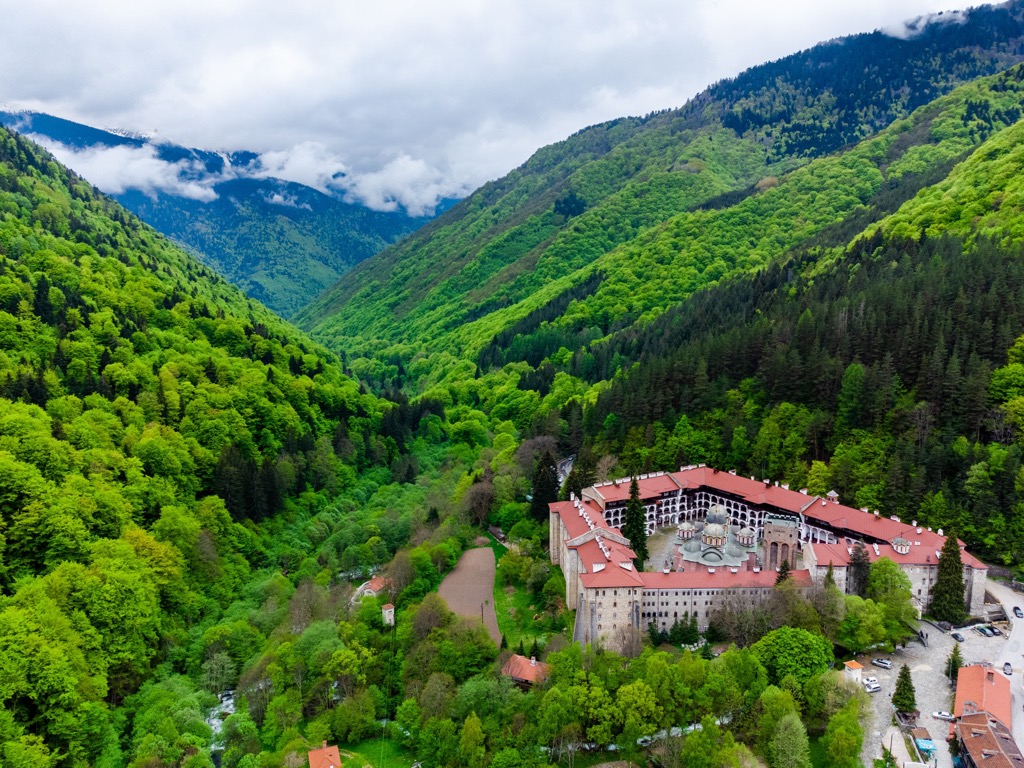
The site lies 4 km (2.4 mi) from St John’s original hermitage. Rila Monastery has had an important effect on the development of culture in most Christian areas of the Ottoman Empire. Not only did it offer a place for academics and arts, but it also offered religious harmony. Its influence today is seen everywhere you look, from architecture to frescos. Due to its influence, you can see similar architectural structures in many other parts of Europe.
The building itself saw the light of day during the First Bulgarian Empire, during the reign of Emperor Peter I of Bulgaria (927-969). In the eighteenth century, this spot became one of the most important centers for the country's national revival.
Eastern Bulgaria and Rila, in particular, were favorite places for a retreat to many Bulgarian monarchs, including Ferdinand I and his son Boris III. Tsarska Bistritsa, aka Tsarsko Selo, is a complex of buildings with a park built in the Bulgarian National Revival style. The construction started in 1898 and finished in 1914.
The park was established on 24. February in 1992. Rila National Park and mountain massif as a whole is a popular tourist destination for winter sports. You'll find lots of opportunities for winter activities, and it's also a great place to unwind. The Borovets ski resort has 27 marked runs with a total length of 58 km (36 mi). There are 12 lifts, as well as conditions for a variety of sports, from alpine skiing and snowboarding to cross-country skiing.
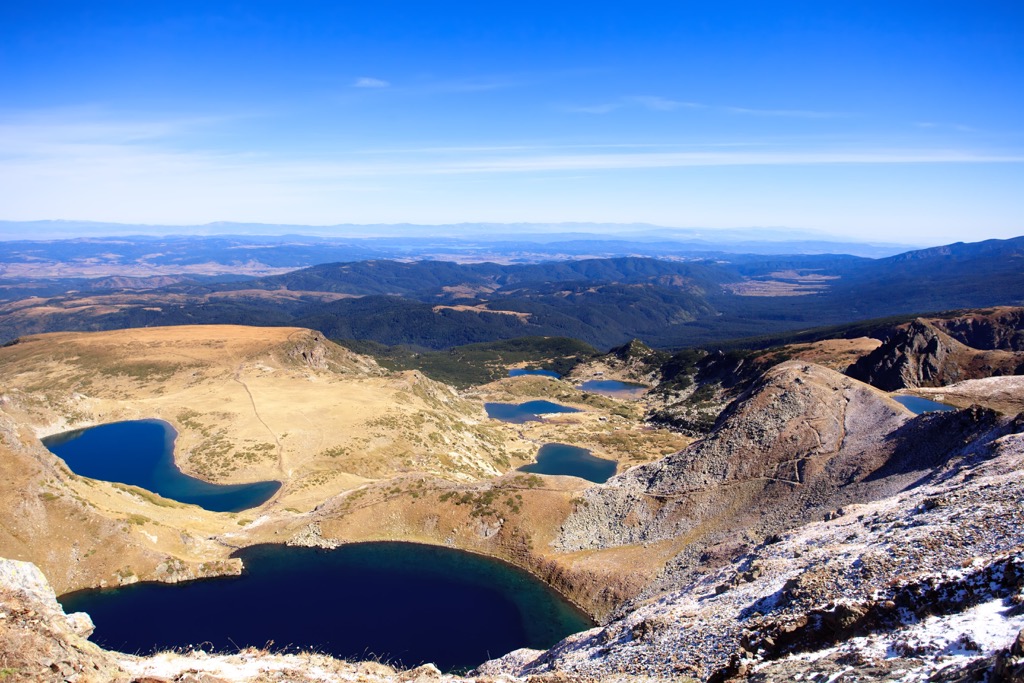
Rila mountain is the source of 6% of Bulgaria's timber. The main domestic industries are manufacturing, food processing, machine building, and paper mills. As a result of its abundance of water resources, Bulgaria has the largest number of hydropower plants in southeastern Europe. The Belmeken Dam is one example. In 2000, a park called "Dancing Bears Park" was established here, protecting many bears from Bulgaria after a ban on dancing bears. This park's bears are from Bulgaria, Albania, and Serbia.
Here are the best hiking ideas for this national park:
Malyovitsa (2,738 m/ 8,983 ft) might not be the highest mountain in Rila National Park, but there's something about it that's very compelling. It has a 305 m (1000 ft) tall north face, and that is why it is considered the summit of mountaineering and alpinism in the country. For more than a century now, the majestic natural beauty of Malyovitsa has provoked people.
This hike will always be one of the best adventure treks in Bulgaria. It takes 13 km (8 mi) with an elevation gain of 950 m (3,116 ft). The easiest route to the Malyovitsa summit is along the ridge of Deer Peak. You can take a hard left on the northern ridge and cross over it to get over the top of Malyovitsa.
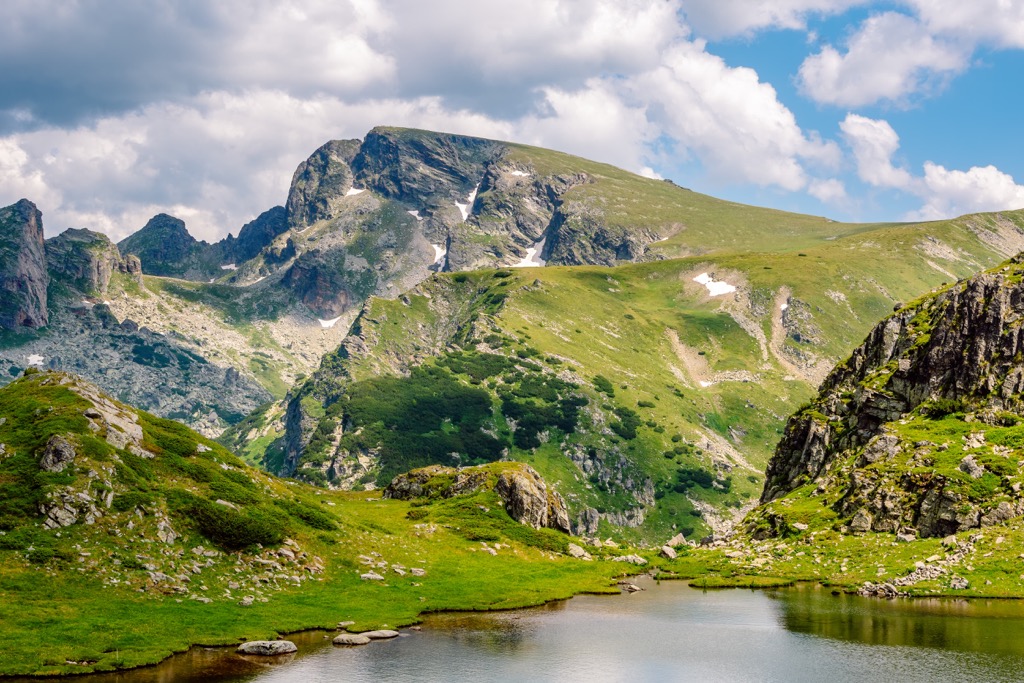
The summit is 2,926 m (9,599 ft), which gives it the title of the highest point on the Balkan Peninsula. The easily-accessible ski resort below it takes up a large area and has been called "the dream for skiers." But Musala is a dream for hikers as well. Arab travelers named it Musala (2,926 m/ 9,599 ft), meaning "the highest altar before God."
This one-day route will allow you to reach the summit with a little effort. The elevation gain is over 500 m (1,640 ft), and it will take 12 km (7.4 km). The first part of the route is easy and smooth. It goes up the mountain slope along with some steep parts.
On your way to the mountain summit, you can walk in several different directions depending on your fitness level. But once you reach the summit ridge, it offers a gentle ascent until you reach the top.
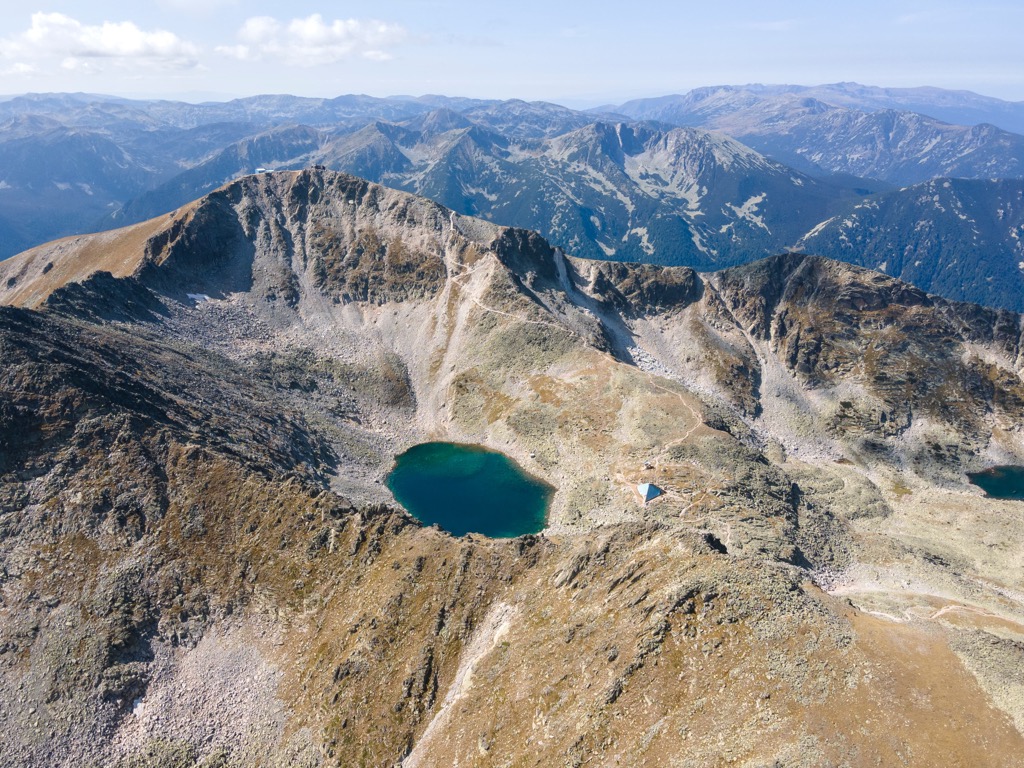
One of the best hikes you'll be able to have on Rila Mountain is to Okoto Lake, one of the mystical Seven Rila Lakes. They regard it as the soul of Rila because it shows you the mountain’s beautiful side.
When you combine it with a visit to a ski resort or a climb to a remarkable summit and an exciting round trip somewhere between one of the most classic hikes in all of Bulgaria, you will see that Rila Lakes have it all.
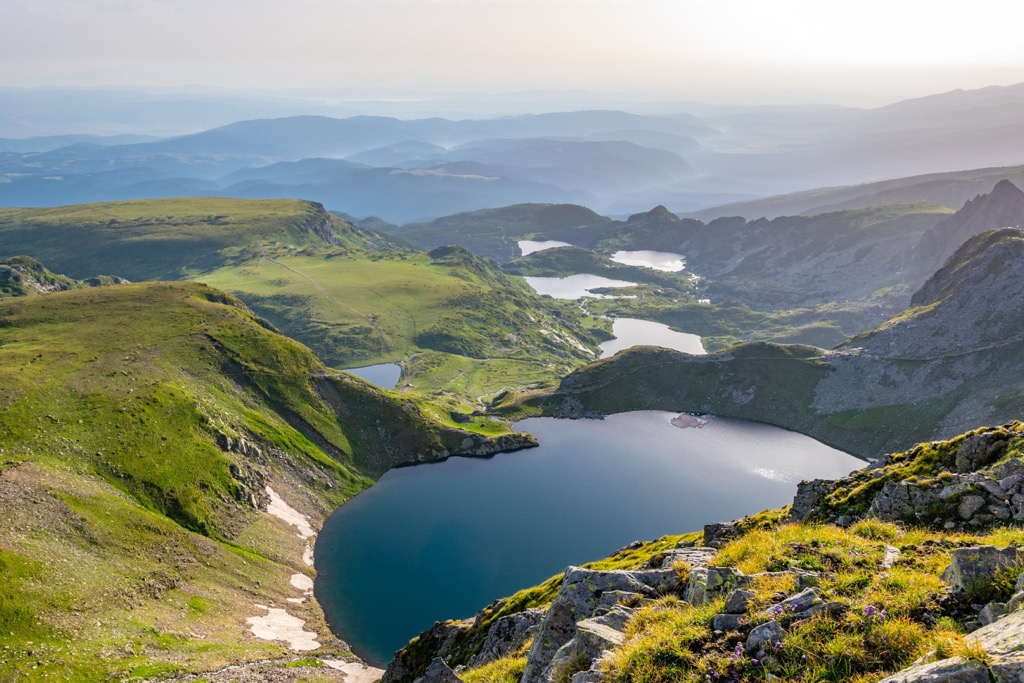
Here are a few fun cities to visit when enjoying Rila National Park:
Borovets is a ski resort in Bulgaria. It is the largest ski resort in the country and one of the most popular destinations for winter sports enthusiasts. The resort has been around since 1892, when it was founded to create an area where people could enjoy skiing, snowboarding, and other winter activities.
The resort has been continuously expanding, with new facilities added daily. This is why you will find all kinds of accommodation options here, and reach it via road.
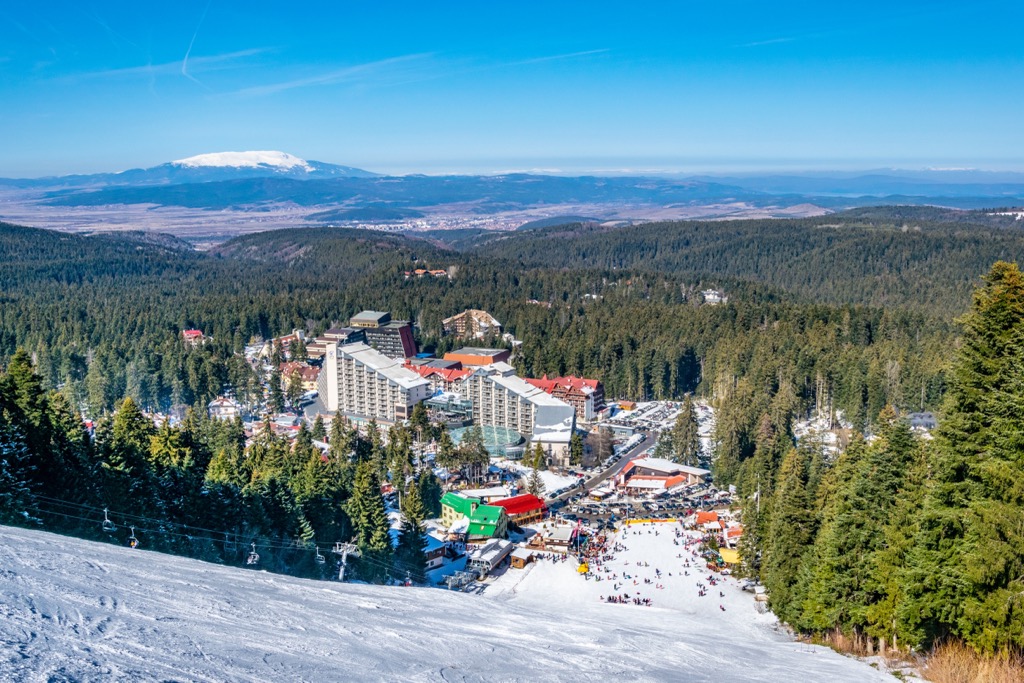
Plovdiv is the second-largest city in Bulgaria and the capital of the Plovdiv Province. It lies in southern Bulgaria, on both banks of the Maritsa River. Plovdiv has a rich history dating back to ancient times. Thracian tribes founded it.
It later became a major settlement on the Via Egnatia, which led to its development as an important commercial center during Roman rule. Reach Plovdiv via road, rail, and air. Since it’s a tourist city, accommodations are easy to book.
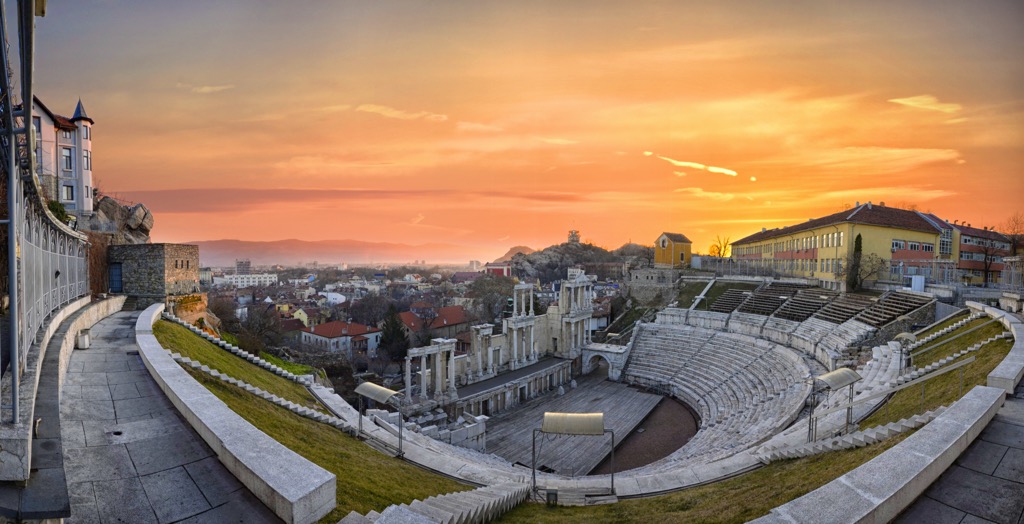
Sofia is the capital and largest city of Bulgaria. It is the country's political, cultural, educational, and transportation center. One can reach it via road, rail, and air. Since it is a tourist city, different accommodations will be available to you.
Sofia is a beautiful city with a rich history. It has been inhabited since at least 4000 BC. The name Sofia comes from the Greek word "sofia" meaning wisdom or intellect. Sofia has a population of 1.2 million people, and it is one of the most densely populated cities in Europe.
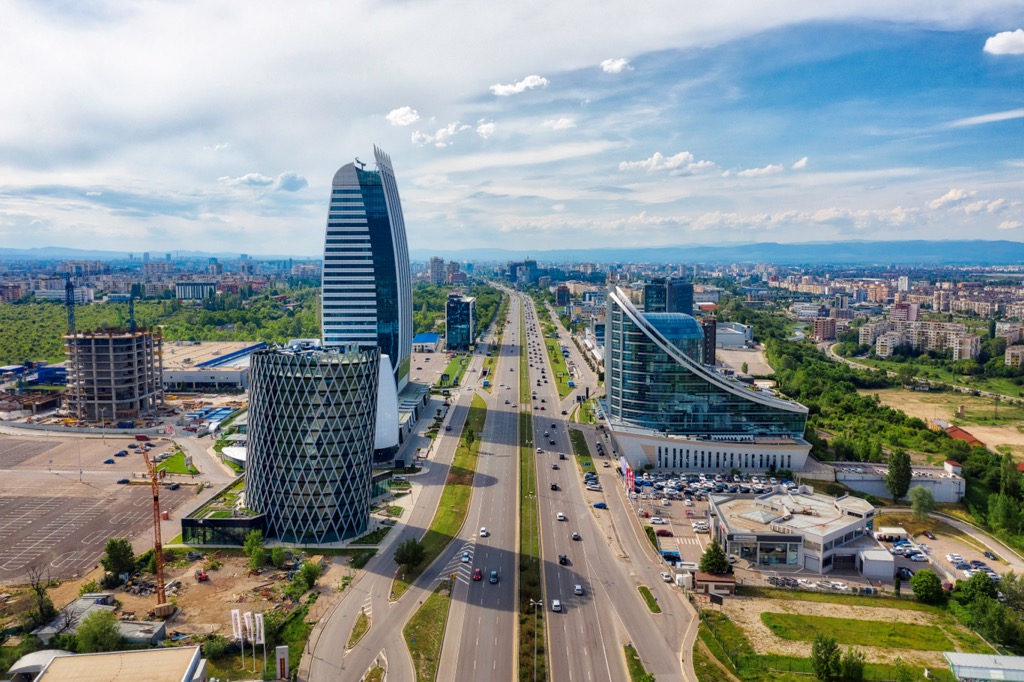
Explore National park Rila with the PeakVisor 3D Map and identify its summits.








